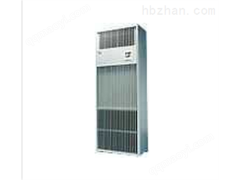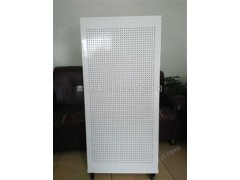- 处理风量:
- 15000-20000m3/h
- 过滤风速:
- 0.5m/min
- 过滤面积:
- 692㎡
Printing and dyeing plant smelting plant pulse Bag dust collector is when the dust-containing gas enters the dust collector from the air inlet. It first hits the inclined plate and baffle in the middle of the air inlet and outlet, and then the airflow turns to flow into the ash hopper. At the same time, the airflow slows down due to the inertia effect, causing the coarse dust in the gas to flow directly into the ash hopper. . The airflow that enters the ash hopper for pre-dust collection then turns upward and passes through the filter bag with a metal skeleton inside. The dust is collected on the outer surface of the filter bag. The purified gas enters the upper clean room of the filter bag chamber and collects at the air outlet to be discharged. During the purification process of dust gas through the filter bag, as time goes by, more and more dust accumulates on the filter bag, increasing the resistance of the filter bag, causing the treatment air volume to gradually decrease. For normal operation, the resistance must be controlled within a certain range (--mm Once the water column) exceeds the range, the filter bag must be cleaned. When cleaning, the pulse controller sequentially triggers each control valve to open. The compressed air in the pulse valve air bag is sprayed through the venturi tube from each hole of the blow pipe into the corresponding filter bag. The sudden and rapid expansion makes the dust accumulated on the surface of the filter bag fall off and the filter bag returns to its original state. The cleaned dust falls into the ash hopper and is discharged from the machine through the ash discharge system. As a result, the dust accumulated on the filter bag is periodically pulse-injected and cleaned, so that the purified gas can pass normally to ensure the operation of the dust removal system.
The dust collection points of the pulse bag dust collector dust collection system in printing and dyeing plants and smelting plants should not be too many. Generally, a system should not have more than one dust collection points. When the distance between the suction points of the dust collector is not large or the resistance between the parallel branch pipes can still be balanced, the number of suction points of the dust collector can be appropriately increased but should not exceed 2. The dust collection system of a dust collector with many dust collection points can use a large-section collection pipe to connect each dust collector branch pipe to facilitate the balance of resistance between the branch pipes. In order to prevent dust from the steel plant dust collector from being deposited in the pipeline, the horizontal arrangement of the dust collector pipeline should be avoided as much as possible, especially the pipelines transporting pulverized coal. The angle between the dust collector pipe and the horizontal plane shall not be less than 1. The pulse dust collector can also be arranged horizontally for pipes with a dust concentration of less than // and the flow rate in the pipe is greater than //. Due to various special reasons in steel plant dust collectors, the pipes must be arranged horizontally. When the pipes must be arranged horizontally, the length of the horizontal pipes should be shortened as much as possible and cleaning holes or compressed air pipe joints should be installed near pipe fittings such as elbows, tees, etc. of the dust collector pipes for regular cleaning.









 Year1
Year1





 WhatsApp
WhatsApp





